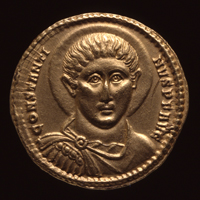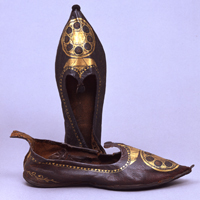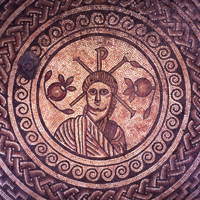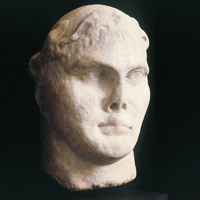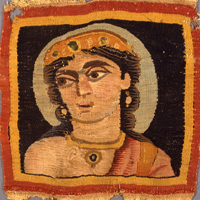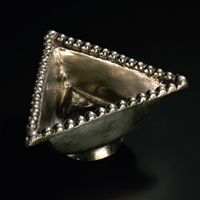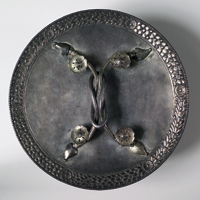Constantine the Great, the Roman emperor responsible for promoting Christianity and arguably the most influential figure in the growth of the Church, is the focus of a major international exhibition in York in 2006.
It was in York, then called Eboracum, that 1700 years ago, in the year 306, Constantine was proclaimed emperor by his troops on the death of his father, the Emperor Constantius, while both were on a military campaign to defeat the Picts.
The Yorkshire Museum has brought together more than 270 beautiful and fascinating objects and works of art of the period from 36 different museums and private collections across the UK and Europe.
The exhibition, Constantine the Great, York’s Roman Emperor, mounted in association with the British Museum, opened on 31 March and is one of Yorkshire’s cultural and tourism highlights for much of the year. It closes on 29 October, 2006
The anniversary of Constantine’s proclamation, on 25 July, 306, will also be marked by a special service of commemoration at York Minster at around midday on 25 July, 2006.
The exhibition shows how wealthy the empire was at the time and tells how Constantine’s greatness as a leader meant there was a prolonged period of prosperity during his rule which continued after his death. It also gives an insight into what it meant to be an emperor in late Roman times and demonstrates Constantine’s power and military might.
Mosaics from late Roman villas, painted plasterwork, sculptures, textiles, silverware, games, weapons, coins, jewellery and even furniture offer a rich visual feast, evidencing the wealth and magnificence of the age.
Constantine’s influence on Christian history arose out of conflict. Inspired, it is said, by a vision of a Christian symbol on the eve of battle at Milvian Bridge outside Rome in 312, when he defeated a persistent usurper, Maxentius, Constantine associated the Christian deity with the victory (while he continued to honour the Roman sun god, Sol Invictus). Christianity and other religions were thereafter tolerated, not persecuted as hitherto. In due course the Church was given legal rights and large financial settlements.
Constantine built St Peter’s in Rome, at the heart of today’s Vatican City, as well as other churches in the city and in Constantinople, and the Church of the Holy Sepulchre at Jerusalem. Legend has it that his mother, Helena (later made a saint) found the True Cross on which Christ died during her visit to Palestine.
In 325 he presided over the first ecumenical council at Nicaea (now Iznik) in Turkey, at which the words of the Nicene Creed, which are still repeated today with little change, were agreed.
When he died in 337, Constantine had ruled for more than 30 years, during which time he reunited the divided Roman Empire, reorganised the army, restored the civil powers of government and the Senate, and created Constantinople as the ‘New Rome’ for the empire on the site of the Greek city of Byzantium, now the capital of Turkey, Istanbul.
Curator of the Constantine exhibition Elizabeth Hartley, of York Museums Trust, said: “We have loans of international importance from Britain and Europe for our exhibition. They provide a unique opportunity for visitors to explore the history and the richness of the late Roman world.
“Constantine is accepted as one of the greatest emperors of the Roman Empire whose ability and vision reshaped the world in which we live. His destiny meant that his story began here in York, and his extraordinary achievements give us a worthy subject to celebrate.”
Gillian Cruddas, chief executive of York Tourism Bureau, indicated that the bureau would be supporting the celebrations of the 1700th anniversary, since it is "such a significant date for the history of Europe. . . .York’s Roman history is always fascinating to many of our four million British and international visitors and we hope that as a city we can bring to life the era of Eboracum and of Constantine.”
David Andrews, chief executive, Yorkshire Tourist Board said: "Tourism is massively important to Yorkshire and one of the most important attractions we have is York itself. Tourism earned Yorkshire in excess of £4.1billion last year, impressive, but not enough. Our target is to increase the value of tourism to the region by 5% per annum achieving earnings of £5.9billion annually by 2010. To do this, we need high quality, world class events to engage new audiences and stimulate past visitors to visit again. York Museums Trust with help from the Heritage Lottery Fund has given us an event with huge potential and appeal. The collection put together for this exhibition is outstanding and the work going into its presentation, meticulous."
NOTES
1. Constantine The Great – York’s Roman Emperor has been supported by the Heritage Lottery Fund, the Shepherd Building Group, The Foyle Foundation, the Henry Moore Foundation, the British Museum Dorset Foundation, the Joseph Rowntree Trust and Constantine.
2. The exhibition will be supported a highly illustrated catalogue , Constantine The Great – York’s Roman Emperor, published by Lund Humphries, in association with York Museums Trust.
3. Constantine and the Late Roman World, a three-day international conference, organised jointly by York Museums Trust and the Departments of History and History of Art at the University of York, will take place between 17 and 20 July, 2006, at the Yorkshire Museum.
4. The Yorkshire Museum, York, houses some of the richest archaeological collections in Europe. Its Roman collection is mainly from the 1st to the 3rd centuries and highlights include tombstones, grave goods, cult objects, mosaics, jet jewellery and stone sculpture.
5. The museum is set in ten acres of botanical gardens, The Museum Gardens, which also house the Multangular Tower, originally a Roman tower at the west corner of the legionary fortress. The facing stones in the lower half of the tower are Roman and the larger stones in the upper half are from the medieval period.
6. The Yorkshire Museum opens from 10am to 5pm daily. Admission is £4 for adults, £3 for concessions and £2.50 for children, and is free to under-fives and to York residents with a York card (admission prices are subject to change from January 2006). For more visitor information, telephone 01904 687687 or visit www.constantinethegreat.org.uk

